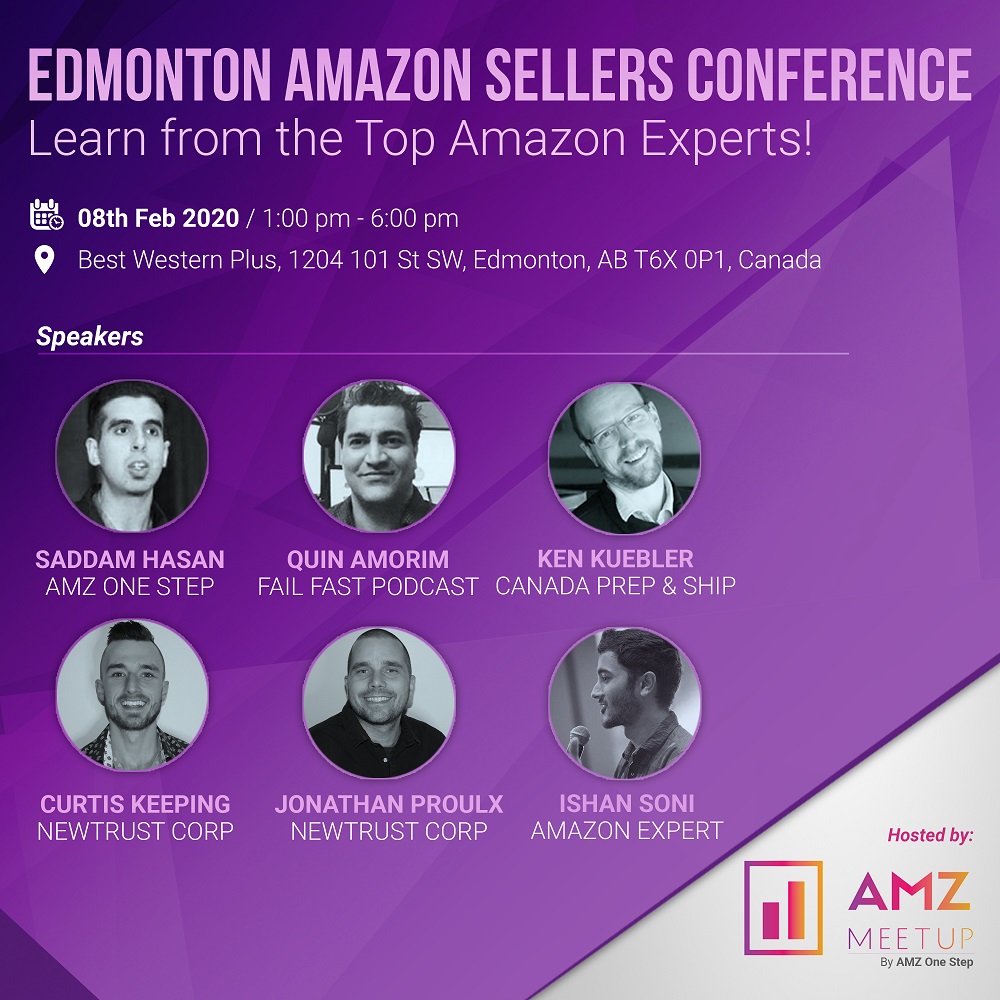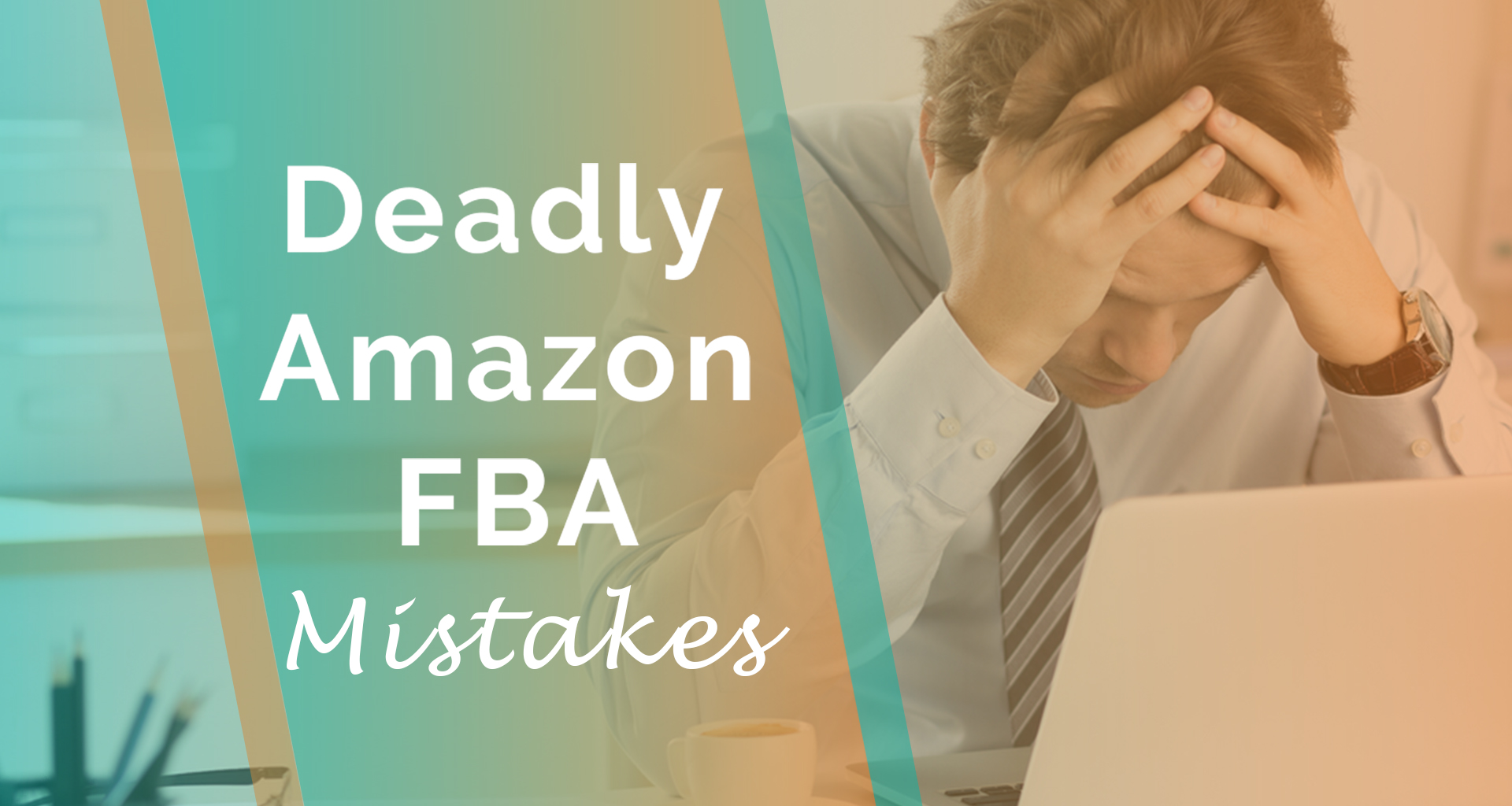You’ve either just launched a brand new product without a proper clue or have found yourself short on Amazon PPC expertise, in both cases, I hope to be of help and download you on all information you need to know about Amazon PPC Campaigns and maintaining them.
Let’s face it. It is a cutthroat competition, where you have to fight tooth to nail in order to get a better spot on page one of Amazon because no really goes beyond page one to buy what they come looking for. Approximately 80% of the consumers buy from page one and even from this selected group, 70% of the buyers don’t look past the highest organic rankings. There’s no doubt you need a successful management strategy if you want your product to rank among the winners. Otherwise, what’s the point?
Amazon PPC campaign runs parallel, in terms of achieving the end result that is: More sales, to other marketing strategies such as ManyChat, ERP (Early Reviewer Program), Deals and Coupons on Social Media Marketing or product website.
This guideline will cover learning opportunities for every level of Amazon seller, from basic to intermediate to an expert level about Amazon PPC.
But first, let’s have a look at what this post will cover.
[toc]
BASICS Of Amazon PPC
Let us get acquainted with the basics for understanding a PPC Campaign.
What is Amazon PPC?
Amazon PPC is an attention-grabbing and a very powerful marketing platform sponsored by Amazon’s website itself. It allows professional sellers to run advertising campaigns by indexing keywords to the product for increased visibility in search results or competitor’s listing, and if you do everything correctly, higher organic rankings.
In key terms, Amazon PPC is an advertising service that can be used to run product ads so you can gain visibility on Amazon’s page one search results using certain keywords. Pay-Per-Click, as its name suggests, charges the seller every time a consumer clicks on the advertisement displayed.
When you receive orders from those keywords through PPC, Amazon indexes those keywords to your product. Hence, PPC allows you to organically rank keywords of your own choice. The goal of Amazon PPC is to boost sales and eventually attain a higher organic ranking once you’ve gained enough exposure and sales.
On a side note, PPC can be best utilized when your listing already has a few numbers of reviews.
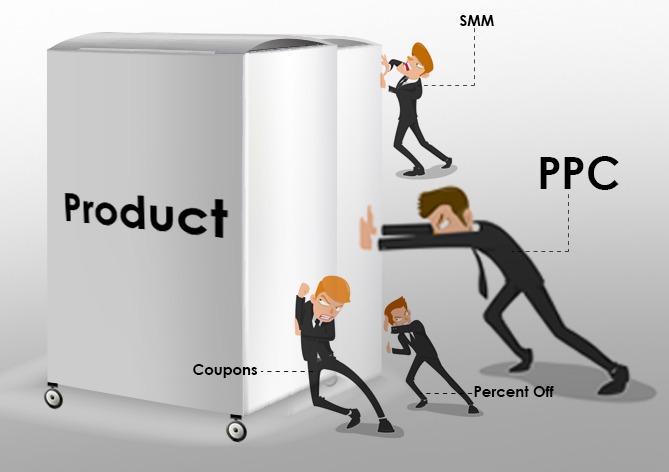
How Does Amazon PPC Work?
The concept behind Amazon PPC Ads isn’t as complicated it sounds. Here is a quick review of what shows up on Amazon when millions of buyers hit enter with various searches each month. Buyers type either small search terms or most frequently a string of words entered to get specific results.
The longer string of keywords is called long-tail-keywords, otherwise just keywords. Once they hit enter Amazon’s algorithm stirs into motion and it retrieves a list of search results that have a match to the search term as specific as it can.
The products that you will see in the results will either have two sources or let’s say reasons to be there. One is Organic and the other is paid. Amazon PPC, as I have discussed above, deals with paid sponsored products. Both types of these results have a place on the top. However, paid results may appear more than in one place.
They can not only be above organic results but also between and on either side. They can also have a place below on an organic product’s selling page. Sponsored ads, their type, and their positioning will be discussed in a while. For now, I’ll stick to the mechanisms.
Amazon PPC functions on the basis of an enhanced auction-based approach. Vendors and sellers are required to bid on keywords that the buyers will likely use to search for products. Day to day budget is set for each keyword. The keyword selection method entirely depends on you.
Either let Amazon fetch relevant keywords according to your listing or manually enter them. Your ads’ display chances go higher as you bid higher. As it works in any auction. The less you bid on keywords, the lesser chances of your ad being displayed. You always have the option of managing bids on keywords in between your campaign according to the profit you reap from them. Once your ads are displayed, every time a customer clicks, you pay for it.
Places Where You Can Target Your Brand PPC Ad
You have seen those ads on Amazon featuring an array of products and brands. They appear in different places and styles as I mentioned above. Amazon allows three ways you can target your advertisement. Sponsored Products, Sponsored Brand, and Display Ads. Each ad style has its own positioning, costs, and varying conversion rate and CTR.
Before choosing which type you should go for keeping in mind what kind of product you have, your intended audiences and your objectives are very important. All three ad types have a purpose to fulfill. Sponsored Ads are best for targeting shoppers with purchase intent, Brand Sponsored ads are good for promoting brand image, and product sponsored ads serves both purposes.
Sponsored Products Ads – Sponsored product ads are very effective when it comes to increasing CTR and conversion rates because they camouflage themselves among the organic results, like right on page one and on the top and between, where 45% of the buyers buy from. If you don’t read the sponsor label carefully enough, you can easily mistake it with an organic result. They can also appear below organic results, on sides, and on a product detail page as well.
Integrating themselves in such a manner that it becomes almost impossible to miss them. It is important you perform deep research on keywords so you can imitate the organic results flawlessly. Once you allocate bids on carefully selected keywords it is up to amazon now to display your ad and make sure it reaches the right audience. Sponsored product ads are not only effective but comparatively cheaper x3 than Google AdWords.
Product Display Ads – When you visit a product page, you may notice ads in a similar product section. For the customers, it provides a choice to consider, for a seller it provides greater insight into customer behavior and needs. Product display ads contain a similar product to the one that is occupying the page organically and is paired to its ASIN. It serves the purpose of targeting a specific audience, categories, audience interests, and relatable listings.
Sponsored Brand Ads – Sponsored Brand Ads appear on top of the search results with brand logos and customized messages that serve the purpose of promoting brand image or awareness. They are on the very top so it makes it near impossible to miss the ad. Brand ad visibility is limited to particular product categories but it does offer the widest range of customization a seller could use.
You have the option to display your banner in the way that is most favorable to you. Pick out your own images or text to display. Banner ads allow you to display your products collectively so the customer gets a bigger impression and more choices from your brand.
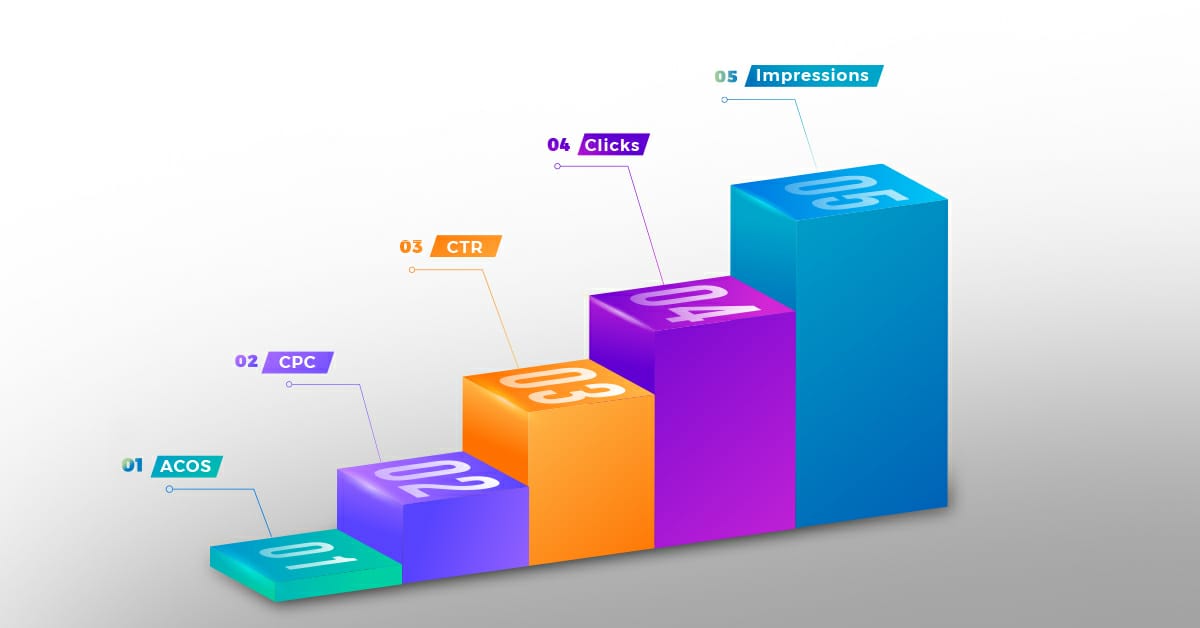 Here are some important PPC terms you should familiarize yourself with.
Here are some important PPC terms you should familiarize yourself with.
Impressions – An impression is when a PPC ad is viewed by the consumer.
Clicks – When a customer clicks your ad, its called a click.
CTR (Click-Through-Rate) – The ratio of how many times visitors click on your product advertisement when it’s displayed. CTR is calculated through a division of clicks by impressions.
CPC (Cost-Per-Click) – The average amount paid for each click on an ad is called CPC.
ACOS (Advertising-Cost-Of-Sale) – ACOS is used to measure the performance of a PPC Campaign. Calculated by an advertisement’s cost that is spent divided by the sales achieved.
Prerequisites Of Running The Best PPC
Running a successful PPC campaign is not about how much money you can throw on Amazon sponsored ads and just hope for the best. It requires serious effort, proper attention, and of course certain prerequisites without which you don’t stand a chance.
There are simply two conditions you must meet before you rely on PPC to rocket your sales.
Attractive Listing
It won’t matter a dime if you spend hundreds on the promotion of your product but fail to make a quality listing. One disappointing look at a sad state of a picture, overly complicated title or poor content can discourage your potential buyer to slip back into the cracks. If you are spending money to promote something, it is obvious that it needs to be worthy, else why would the visitor turn into a customer? A strong impression needs to be made so your campaign can actually turn clicks into sales.
High Demanding And Relevant Keywords
You need keywords that would drive most traffic and sales to your listing. If you are using keywords that have fallen behind or have no relevance to your product, your listing will not appear or be visible to consumers when they search for that same product, hence rendering your PPC campaign useless.
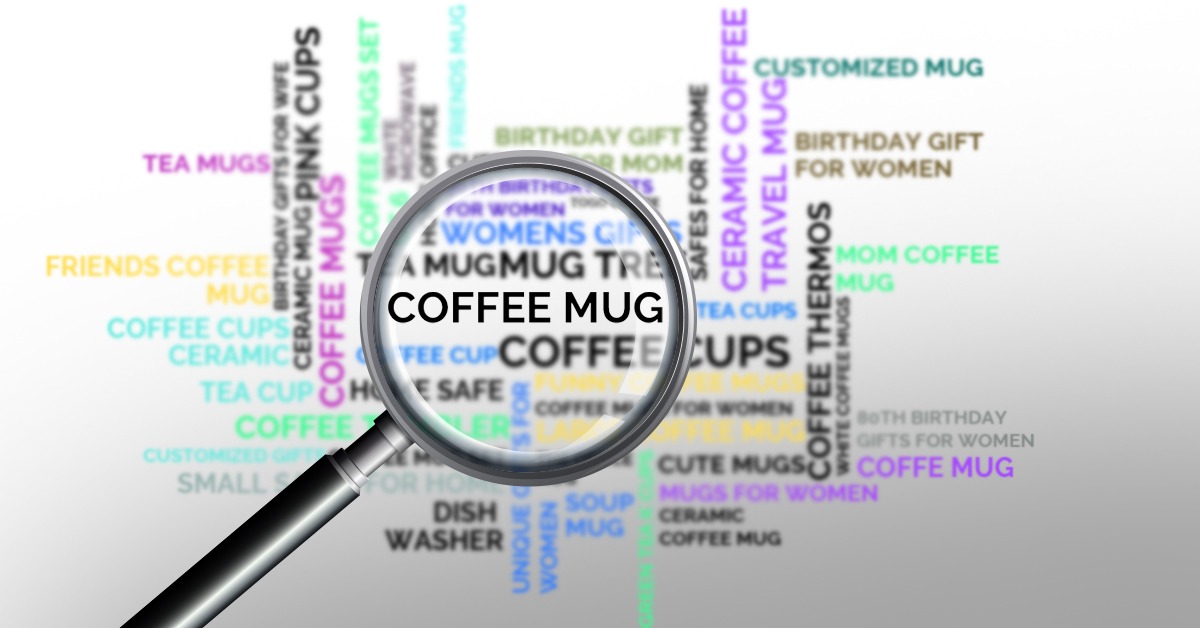
How To Find The Right Keywords For My PPC Campaign?
Modern problems require modern solutions. Keyword research is a crucial step in building a strong and effective listing. This is why I will recommend that you should take assistance from some of the up-to-date, fast, and reliable keyword tools.
Keyword tools not only list down but offer various mechanisms by which you can sort out the keyword lists of your own choice. You may extract competitor keywords or keywords of your own and then proceed to filter out keywords that have high search volumes, top organic rankings, or most sales. In other words, you have to make three keyword lists that will sort the category of Keywords that are Highly Relevant, Medium Relevant and Low Relevant for your PPC Campaign.
If you wish to read more on keyword research, check out our blog on Tips for Amazon Keyword Research.
Difference Between Automatic And Manual Targeting
When you start an ad campaign, amazon charges you with the decision to either pick automatic targetting or manual targeting of keywords. If you opt for automatic targeting, Amazon will target ads to all relevant customer searches using your product’s information including its category, related products, and keywords that you have used in your listing.
On the other hand, if you go with manual targeting, you can manually select all the keywords you would like to bid on, choosing different match types for keywords. You control everything now, but it requires constant monitoring. Some keywords will go on to have low relevancy and if they are not driving traffic to your sale, you can lower your bid on it to effectively manage your campaign.
Understanding Types Of Keywords
Broad Match Keyword
Broad match scoops up everything there is related to your indexed keywords which means that your ad will show up when Amazon shopper types in anything related to your keywords. Let’s suppose you are selling coffee mugs. If you include the keyword “coffee mug” in your ad campaign, then your ad may come up if the customer types in “mug coffee,” “diner mug,” “coffee cup,” or even a synonym like “hot liquid cup,” or a misspelling like, “coffee mug.” Resulting in a broad result.
Phrase Match Keywords
Phrase Match is concerned with long-tail keywords. A longtail keyword is a keyword that is three words or longer, or at least very specific. Whenever a customer uses a highly specific search phrase, they usually already know exactly what they want to buy and therefore long-tail keywords tend to have a higher conversion rate (they result in more purchases) even though their monthly search volume is less (they are searched fewer times in a month).
Phrase match will strip out linking words but keeps the sequence of your keyword. For example, if your keyword phrase is “green coffee mugs for women,” then a customer can search “green coffee mugs women” and your listing will show up on the search results page. This is because “for” is a linking word, and phrase matches ignore those words. However, if the customer searched “coffee mugs green for women” then your listing will not show up on the results page because the sequence of your keyword was changed.
Prepositions, articles, and conjunctions like and, a, of the, in, out, for, and on would be considered linking words.
Exact Match Keywords
Exact match keywords are exactly as the name suggests: the customer’s search term must match your keyword exactly in order for your ad to populate on the search results page. For example, if your keyword is “green coffee mugs with a cartoon,” and your customer types in “green coffee mugs cartoon,” then your ad will not show up.
Be very careful when using an exact match, because one little misspell or a keyword not thoroughly planned well could result in no one typing in your exact keywords phrase and your ad will accomplish nothing.
For the same reason, when dropping in negative keywords that you do not want pulling up your ad, make sure you use an exact match, otherwise, you could be ruling out similar keywords that you want to trigger your ad.
Practical Work
How To Set Up A New PPC Campaign
1. Create a Portfolio.
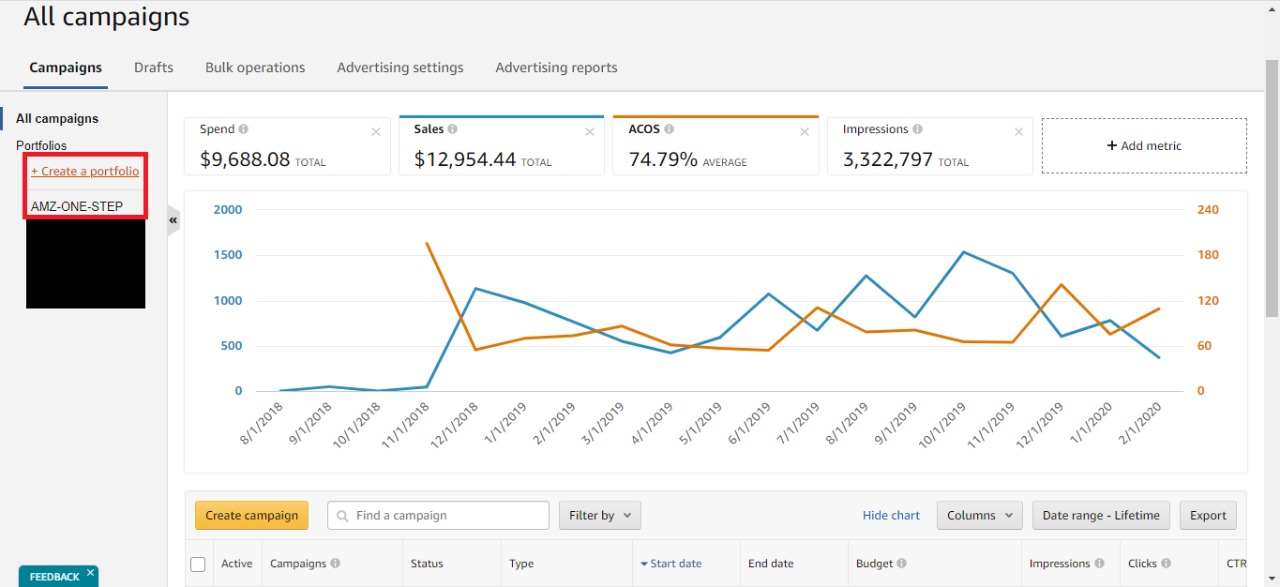
2. Create a campaign.
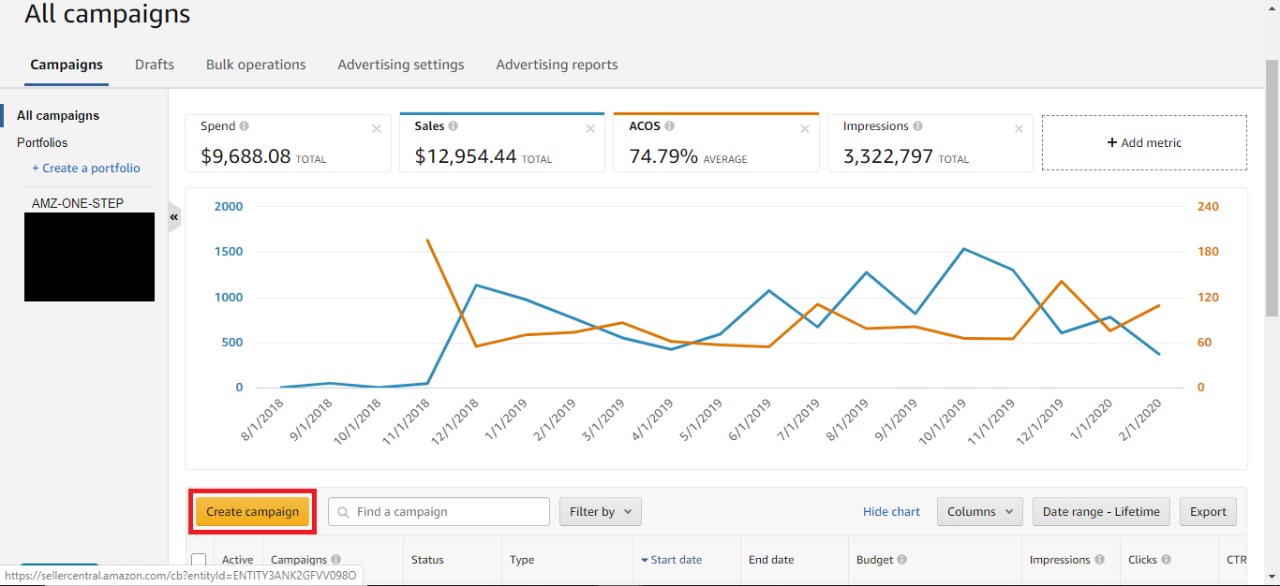
3. Select the campaign type.
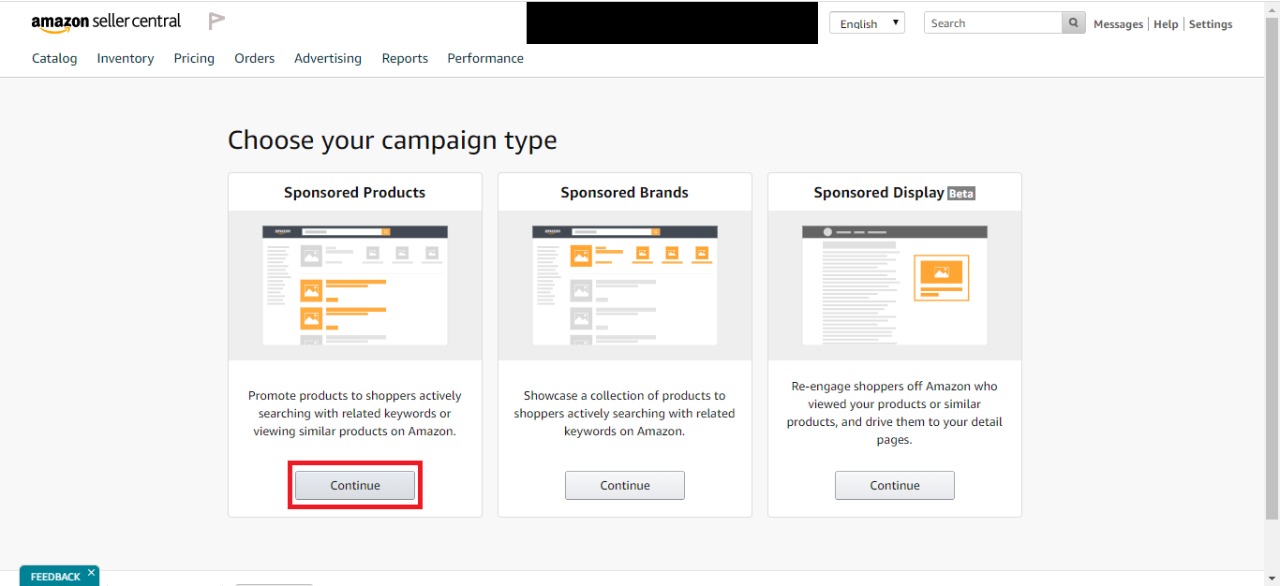
4. Fill out campaign details and select manual targetting if you wish to take control of keywords.
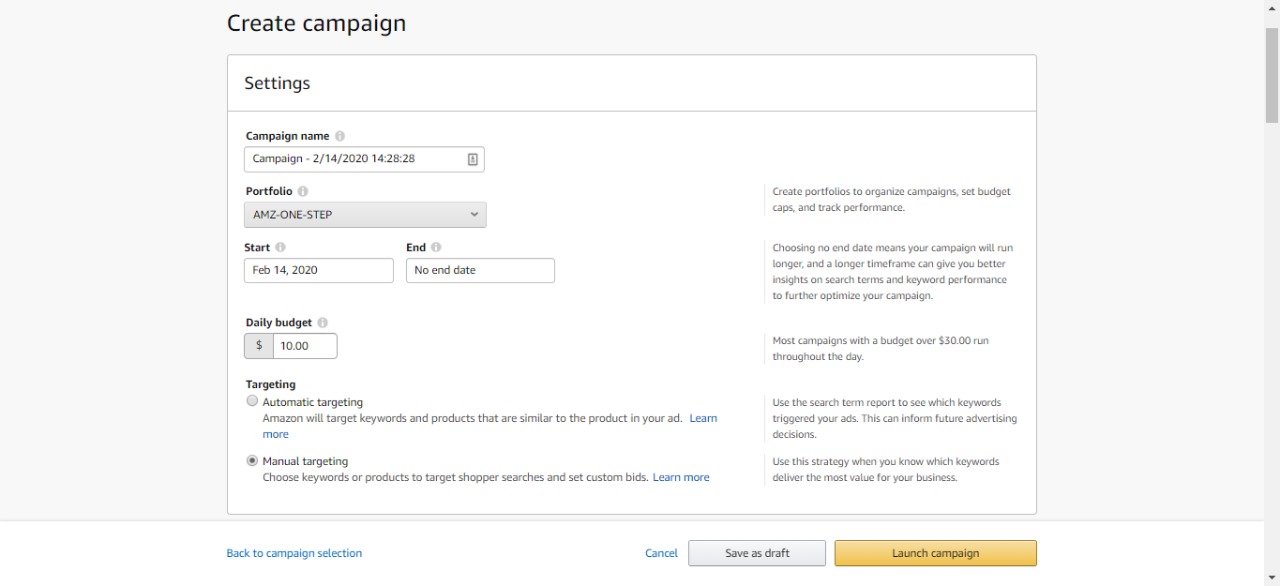 5. Select your preference of bidding strategy, we will go with the dynamic strategy.
5. Select your preference of bidding strategy, we will go with the dynamic strategy.
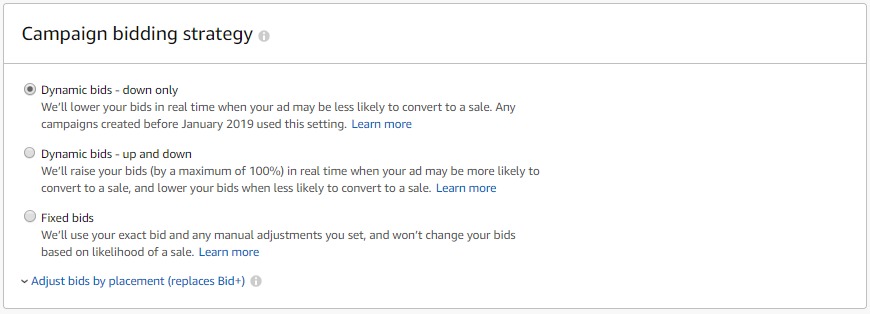 6.
6.
Create an ad group.
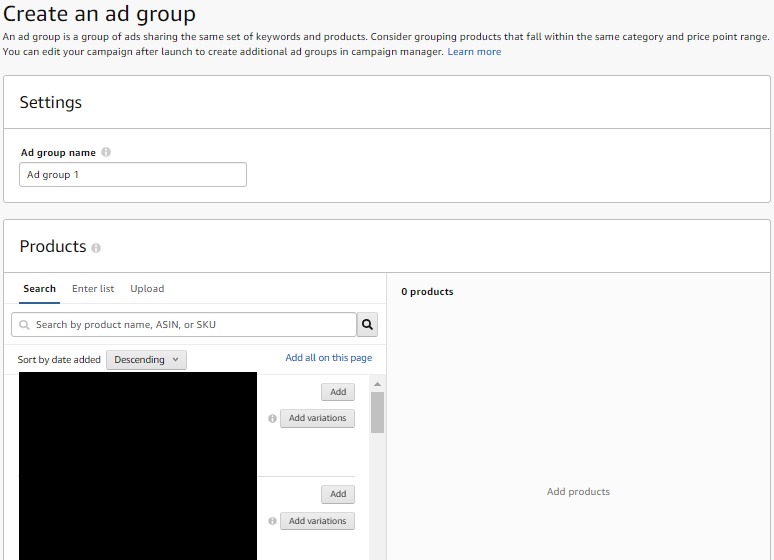
7. Select keyword targetting as your strategy.

8. Enter the bid and list down all the keywords.
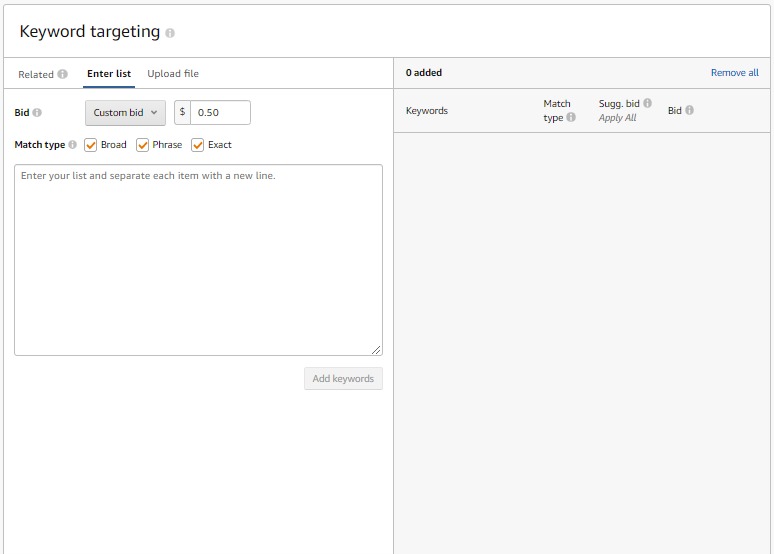
9. Enter negative keywords, if any, and launch campaigns.
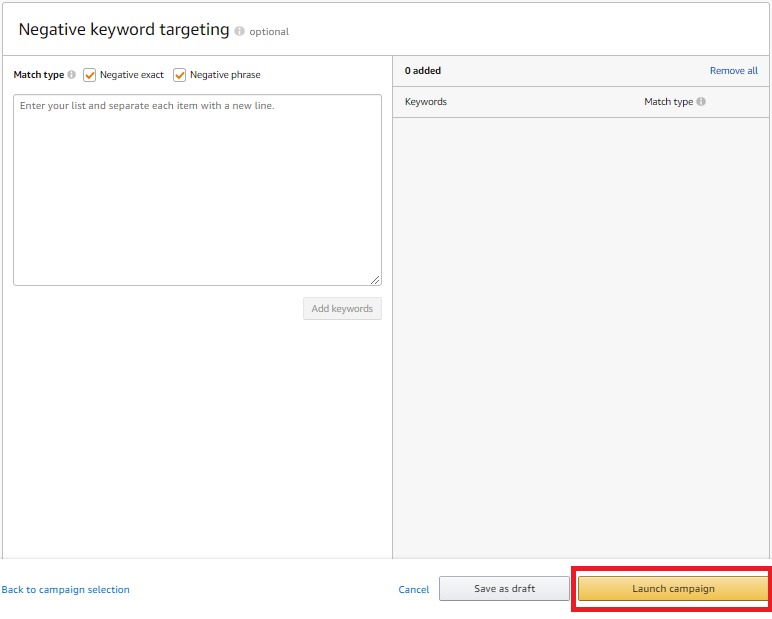
How To Create A PPC Report
- Sellar Central> Reports > Advertising Reports.
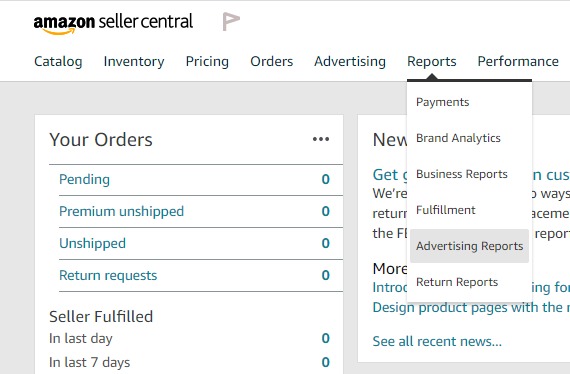
2. Create Report.
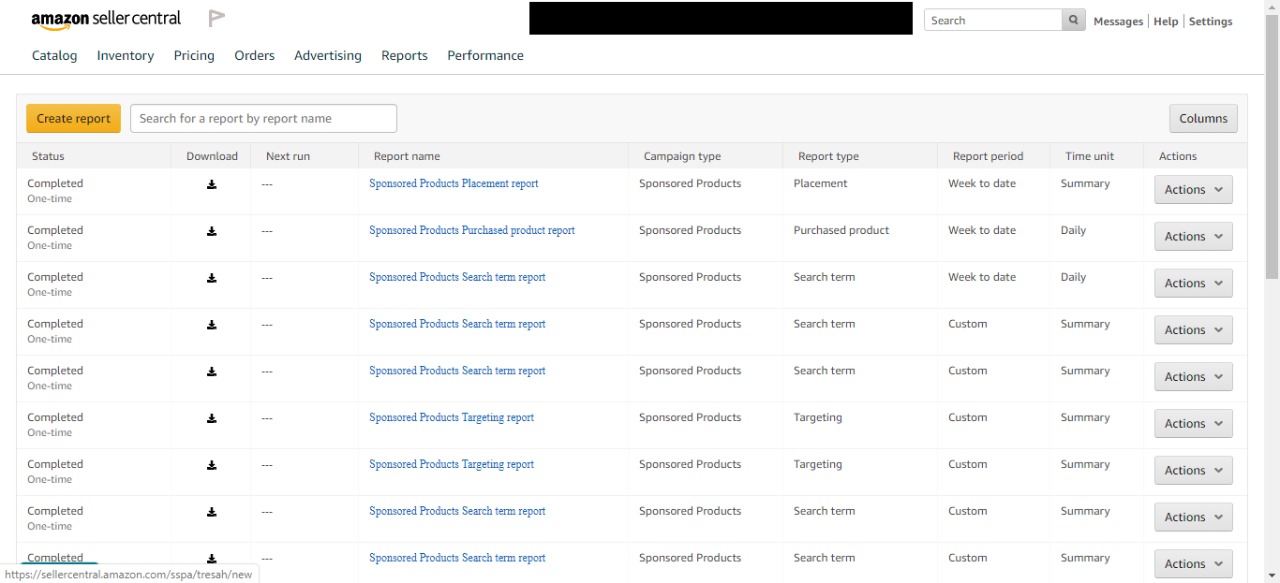
3. Select Configuration.

4. Enter Report name and Delivery Timings.

5. Run Report.
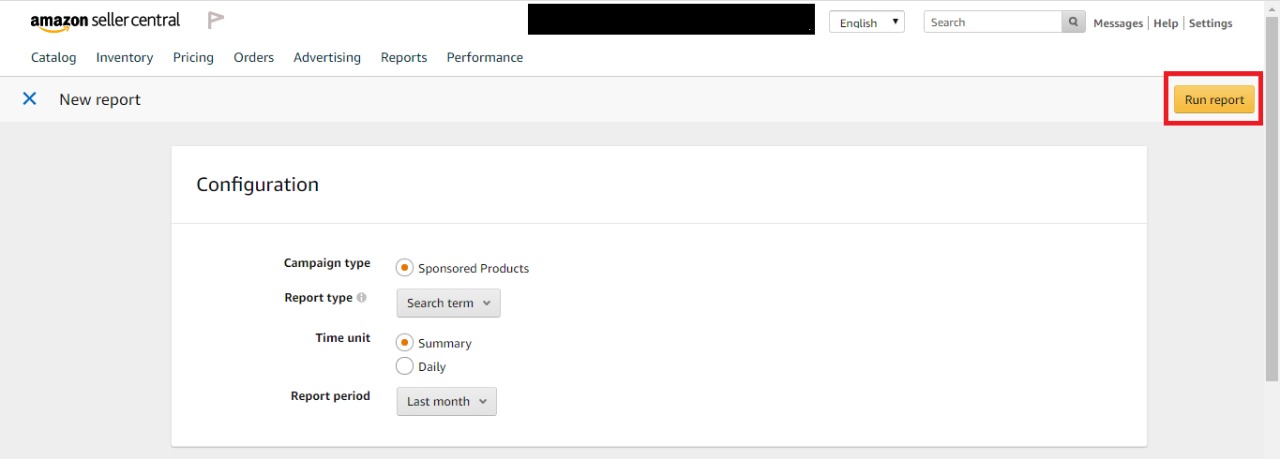
6. Download Report.

Why Should You Go For Amazon PPC?
There are multiple ways to achieve sales, PPC still stands to be one of the best and most effective methods. Here are a few reasons why.
There are many companies that claim to extract the Amazon data using the high to low search volume feature, etc. but in reality, PPC is the only platform through which you can get the most accurate data. PPC stands on Amazon’s very own ground, so there is no doubt that any data you use from PPC in favor of your advertising campaign, will provide the most reliable and trustworthy results.
PPC allows you to target a highly specific audience which means more control to you over who gets to see your message. Targeting the exact demographics like age, location, etc. It centers a strategic play based on what your audience wants to see.
PPC delivers faster results because amazon sponsored ads are right on the Amazon website. Buyers come straight to Amazon when they need to purchase something, having ads next to the purchasing platform makes sales rate naturally higher. Not only does it drives the sales but it also helps with branding and visibility.
Intermediate
If you are already familiar with the Amazon PPC basics, let us move on to other pressing matters. Even when you have sufficient information, sometimes you encounter certain mind-boggling situations which can cause a hindrance in running a successful amazon business.
Below I’ll explore all situations which may be the reasons you might be experiencing difficulty with Amazon PPC.
What To Do When:
1. When You Have Impressions But No Clicks
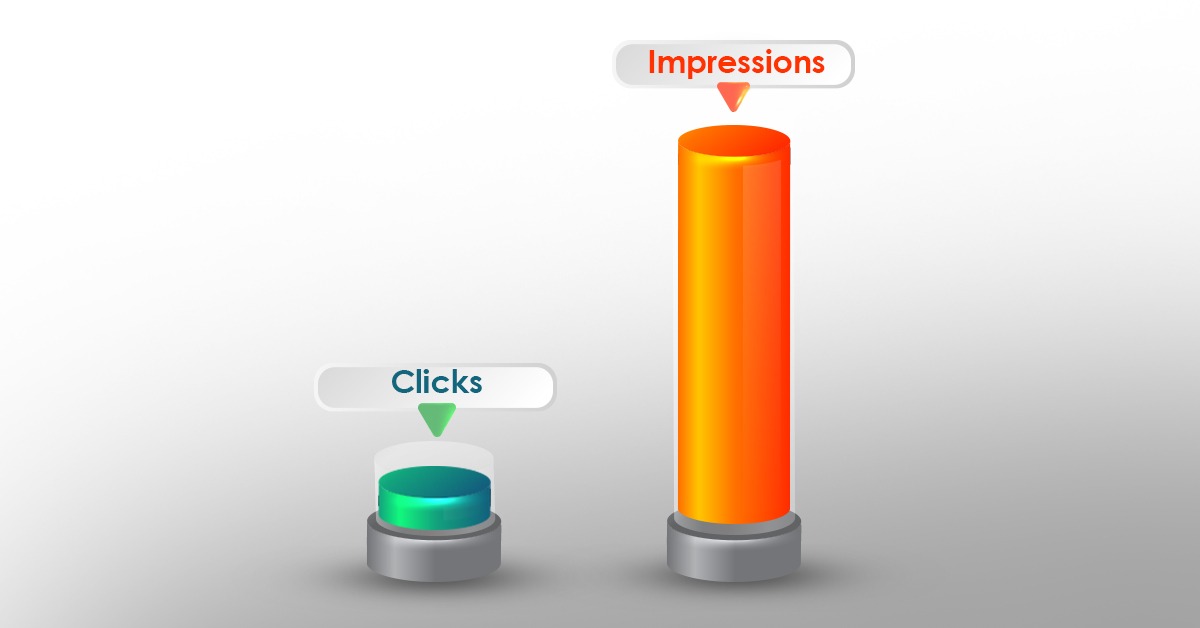
If your PPC campaigns are making customer impressions but you are still not getting any clicks you must be wondering what is it that you are doing wrong. There are a couple of reasons why this mishap may be occurring. Any of the reasons or together they could be preventing clicks.
Let’s begin with a keyword bidding that’s too low. Say, Amazon recommends a keyword’s bid $2 but you go cheap and bid 0.55 cents. This will likely result in the listing to appear on the back pages, where even if someone gets an impression, they won’t click it because they want the best of the best, that is page one products.
Next up, you have to take the relevancy of the products into consideration. If you have indexed keywords with low relevancy it is pretty simple that people will have lower chances of making a search by that keyword. For example, your product ‘green coffee mugs’ is indexed with a low relevant keyword such as ‘cups’. Now first-page search results may not necessarily list all cups/mugs in green color as your keyword says.
To determine keyword relevancy here’s a quick guide.
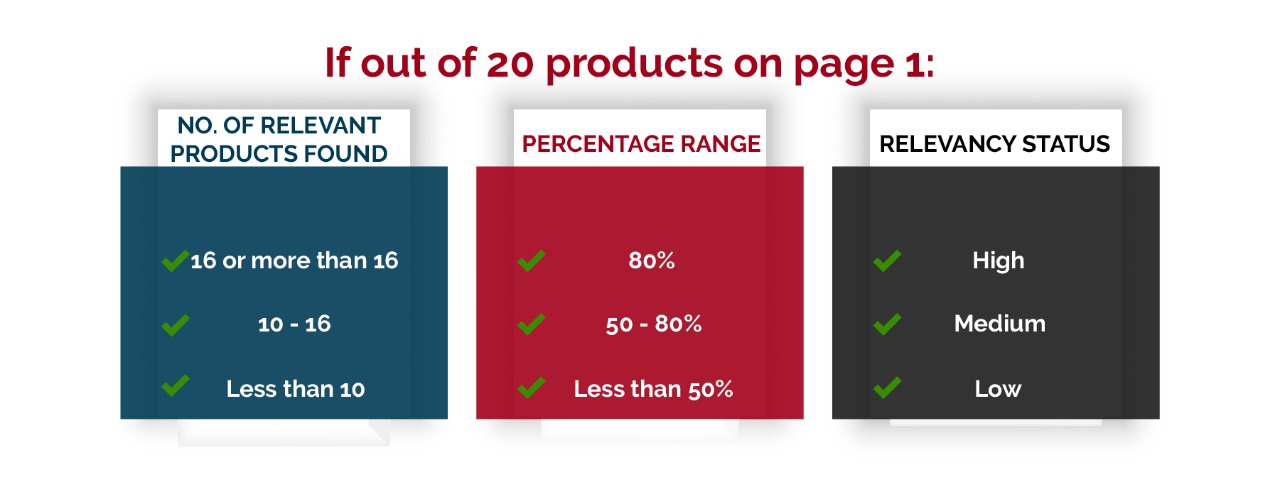 It could also be that your listing is present in an irrelevant category or perhaps an incorrect subcategory. For example, you have listed your product ‘Green Coffee Mugs’ in the category of Kindle store or Electronics, where this product has absolutely no business being. A customer is not going to search or find this product in the relevant areas. Similarly, even with the right category ‘Home and Kitchen’, you can mistakenly end up with a wrong subcategory such as ‘bedding’ instead of ‘kitchen and dining’.
It could also be that your listing is present in an irrelevant category or perhaps an incorrect subcategory. For example, you have listed your product ‘Green Coffee Mugs’ in the category of Kindle store or Electronics, where this product has absolutely no business being. A customer is not going to search or find this product in the relevant areas. Similarly, even with the right category ‘Home and Kitchen’, you can mistakenly end up with a wrong subcategory such as ‘bedding’ instead of ‘kitchen and dining’.
Sometimes sellers make an error with keyword usage in the title of their listing. The Exact and Phrase Match Keywords in your campaign may not be written in the exact order as in the title of your listing. To review the issue with an example, your product says ‘Green Coffee Mugs’ in the title but your exact keyword indexed is ‘Coffee Mugs’ or your phrase match keyword says ‘ Green New Coffee Mugs’.
Having low search volume keywords in your listing could be another reason why your listing is getting imp[ressons but still no clicks. The fewer people are searching using your keyword, the fewer chances of impressions and even less of getting clicks because once again your product might have been pushed back from page 1 where most of the sales occur.
You have to be vigilant of every little detail you enter about your product. It could change the entire game.
2. When You Have Clicks But No Sales
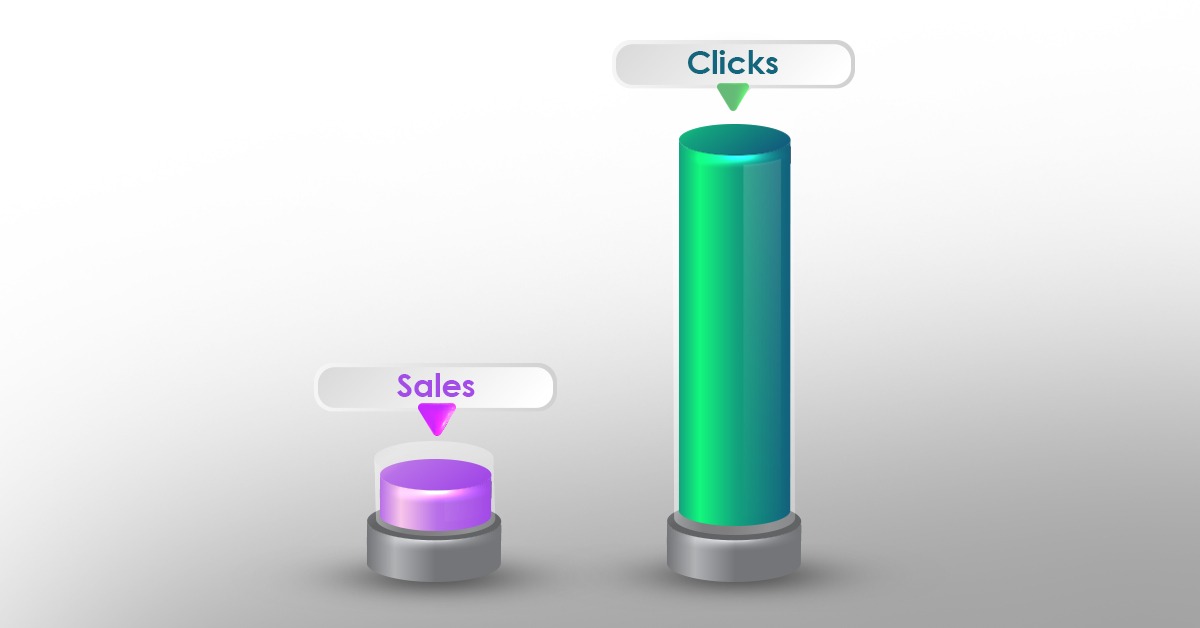
This might seem more puzzling than it actually is. When you are apparently doing everything right and even receiving clicks but still are not getting any sales, it could mean one of two things. Either your listing isn’t good enough or it is not differentiated enough.
Potential buyers may click on your listing but they could be immediately discouraged because your listing wasn’t attractive enough. Make sure to create a listing that has not only sufficient information but also a certain appeal to buyers’ lifestyles. Give shoppers a reason to buy your product over the competitors.
Include quality content, attractive images, and solid selling points. You have to make them stick long enough to agree with your offers, so they may actually buy instead of discarding it.
Sometimes, even when you have an attractive listing you don’t get sales because your product is drowning among the masses. It needs to stand out, in simple terms. Little things such as the main image could change the outcome of the sales. A listing that exclusively offers something others don’t will surely stand out and drive more sales.
3. When Your ACOS Is Too High

Your advertising cost of sale ideally should be less than your profit margin. If your ACOS is coming up to 10-20% it’s a good spend. Otherwise, it proves a more damaging result than your amount to actual sales. In the case, you are struggling with a high ACOS, here might be a few reasons to ponder through.
Your ACOS status depends on the stage you are in when launching a product. If you have just launched your product, say within 10-30 days, the ACoS should not be your concern right now. It’s too early to be worrying about ACOS being high because that’s just how it goes in the early stages. Once you’ve crossed that duration, its time to closely monitor it.
A sensible strategy is to lower your bids on low to medium relevant keywords as they may be costing you a lot of money for a very low return. If a keyword isn’t driving sales as much it should be, there is no point in pouring excessive money after it. Go for the suggested bid or lower it yourself as you might see fit.
Make sure that you have selected the correct match type for your keywords. Irrelevant selection of keyword match type can result in high ACOS because your product is being advertised in the wrong or irrelevant areas where no one is supposed to be looking or buying your product. It is kind of a waste that may slip by unnoticed. Keeping a close eye on where and how your money is spent is a start to managing effective ACOS.
CTR Scale (Click-Through-Rate)
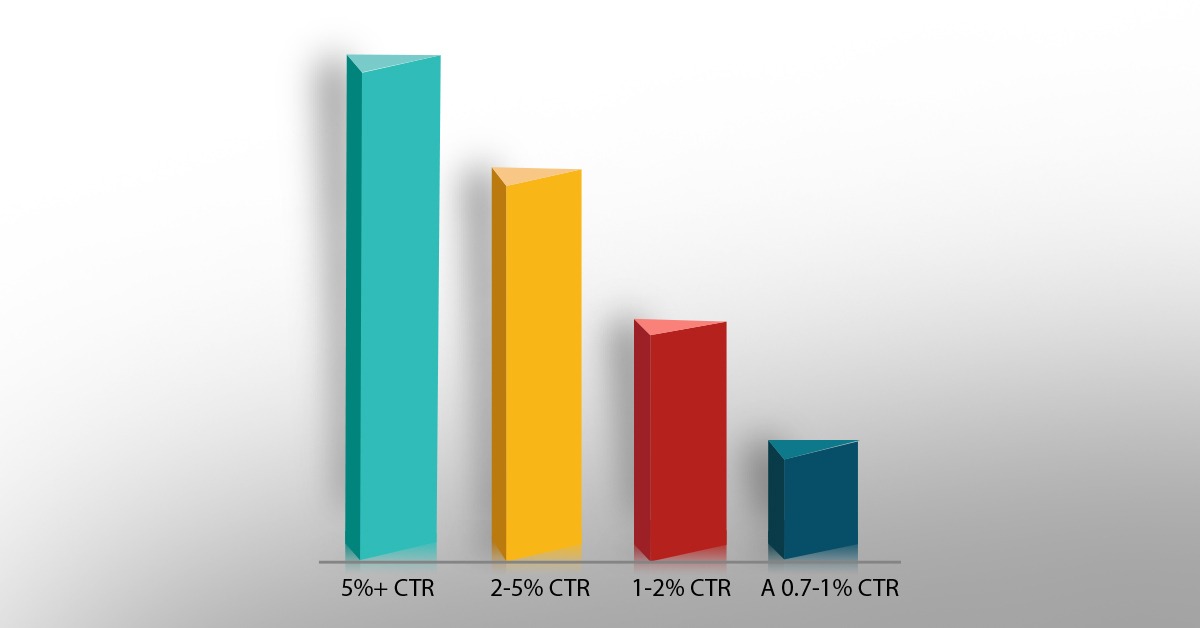
A 0.7-1% CTR is minimum
1-2% CTR is good
2-5% CTR is excellent
5%+ CTR is exceptional.
This is a general guideline and may change with the category you are selling in.
When Can You Stop Pushing PPC And Start Relying On Organic Sales?
Shutting off a PPC Campaign is not recommended even when you have achieved high organic rankings, but rather it is suggested that we simply lower the bids. Being in the top 10 search results is a good indication that your product is doing well and you can start lowering your PPC expenses. But being in the list of top 5 is the ideal state. Again, this depends on the market for your product category.
Although you are now on the first half of page one results, PPC is still favorable to you in terms of keeping you updated about newer and highly relevant keywords that buyers are using to make purchases. Keeping a PPC campaign running, is always a good idea because it grants you not only top but double visibility on page one. The more exposure of your product on the Amazon website, the better.
Expert
Latest PPC Strategies – 3 Types Of Bidding
Dynamic bids ( Down Only)
The strategy is to opt for a setting in your PPC campaign where you only go down on the bids. Lowering your bids in real-time when your PPC ad may have fewer chances of converting sales. Once you have selected this option, there is no raising it back up again, it only goes down.
Dynamic Bids (Up and Down)
This strategy is concerned with a dynamic setting. Either you raise your bids (by a maximum of 100%) in real-time when your keyword may be likely to convert to a sale or lower your bids when your keyword is less likely to convert sales. It depends on the situation of your campaign, which strategy you should go for.
Fixed Bids
As the name suggests, your exact bids and any manual adjustments you set remains throughout the campaign, and it will not readjust your bids based on the likelihood of a sale, as it would in the above-mentioned strategies.
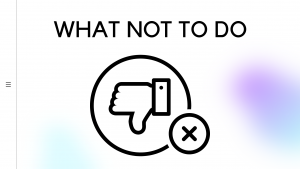











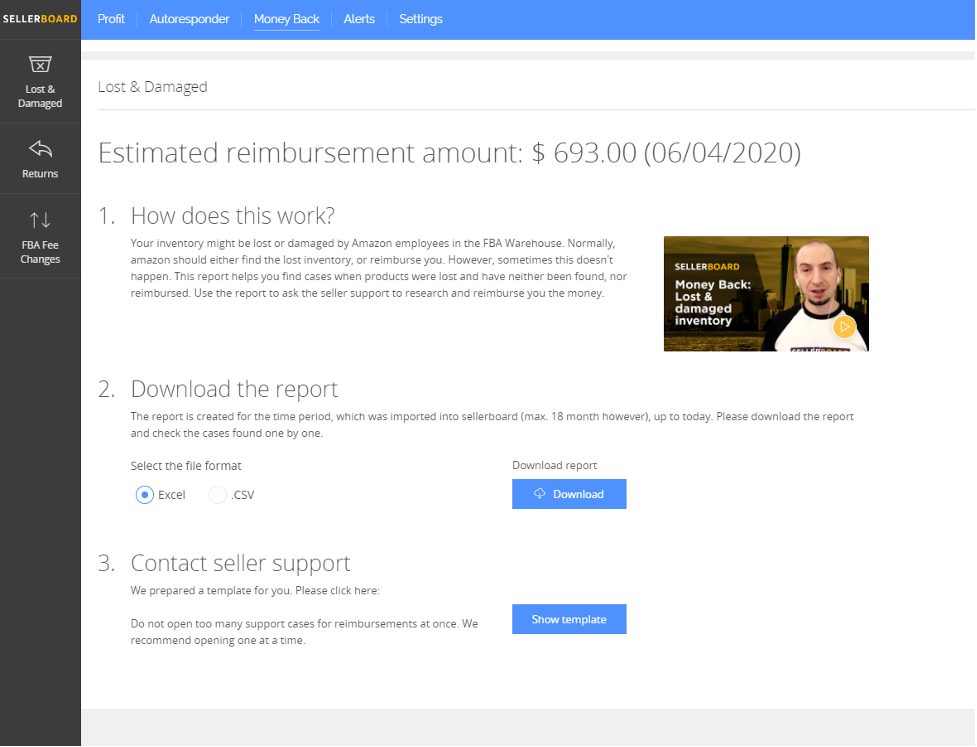

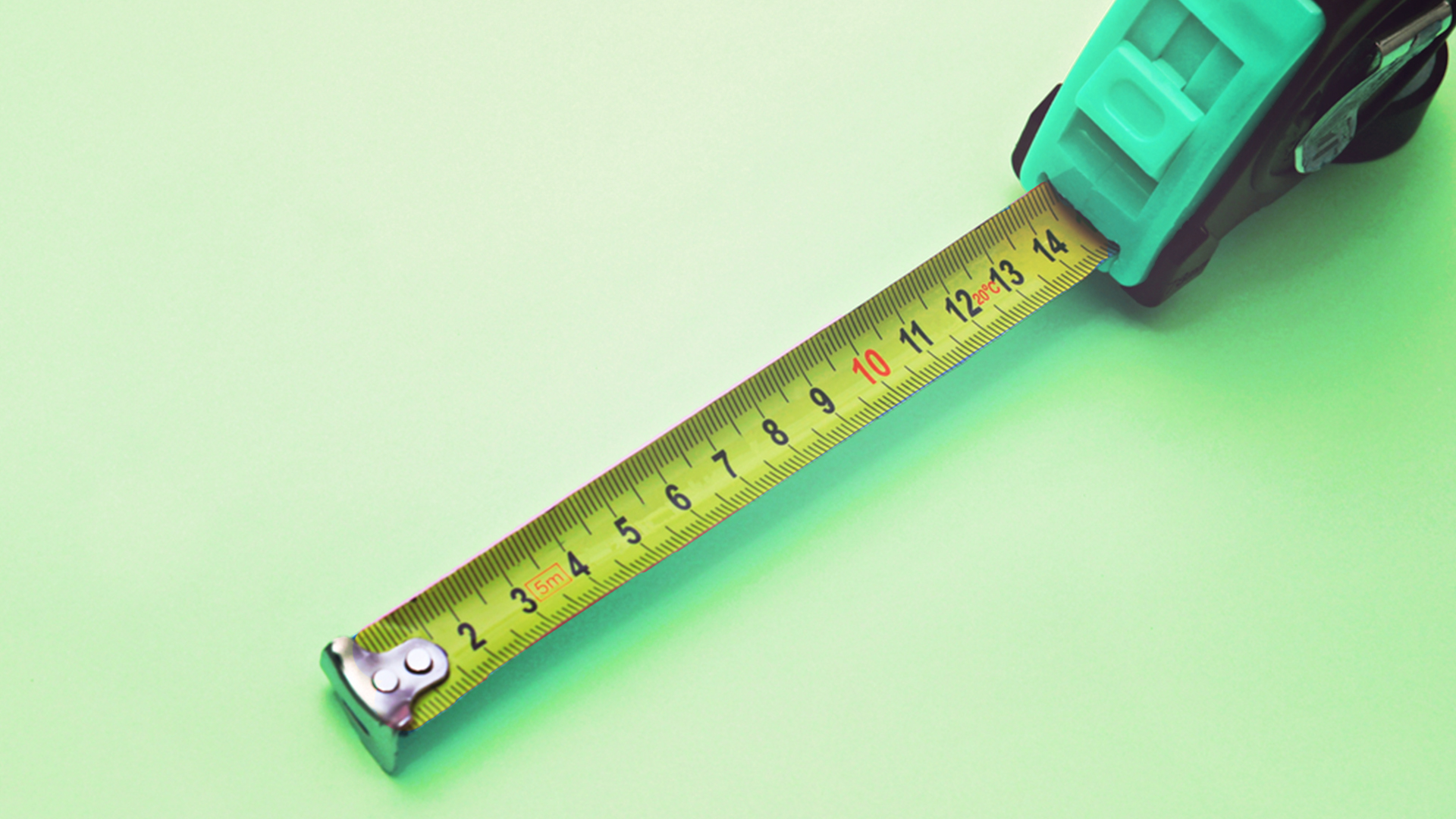

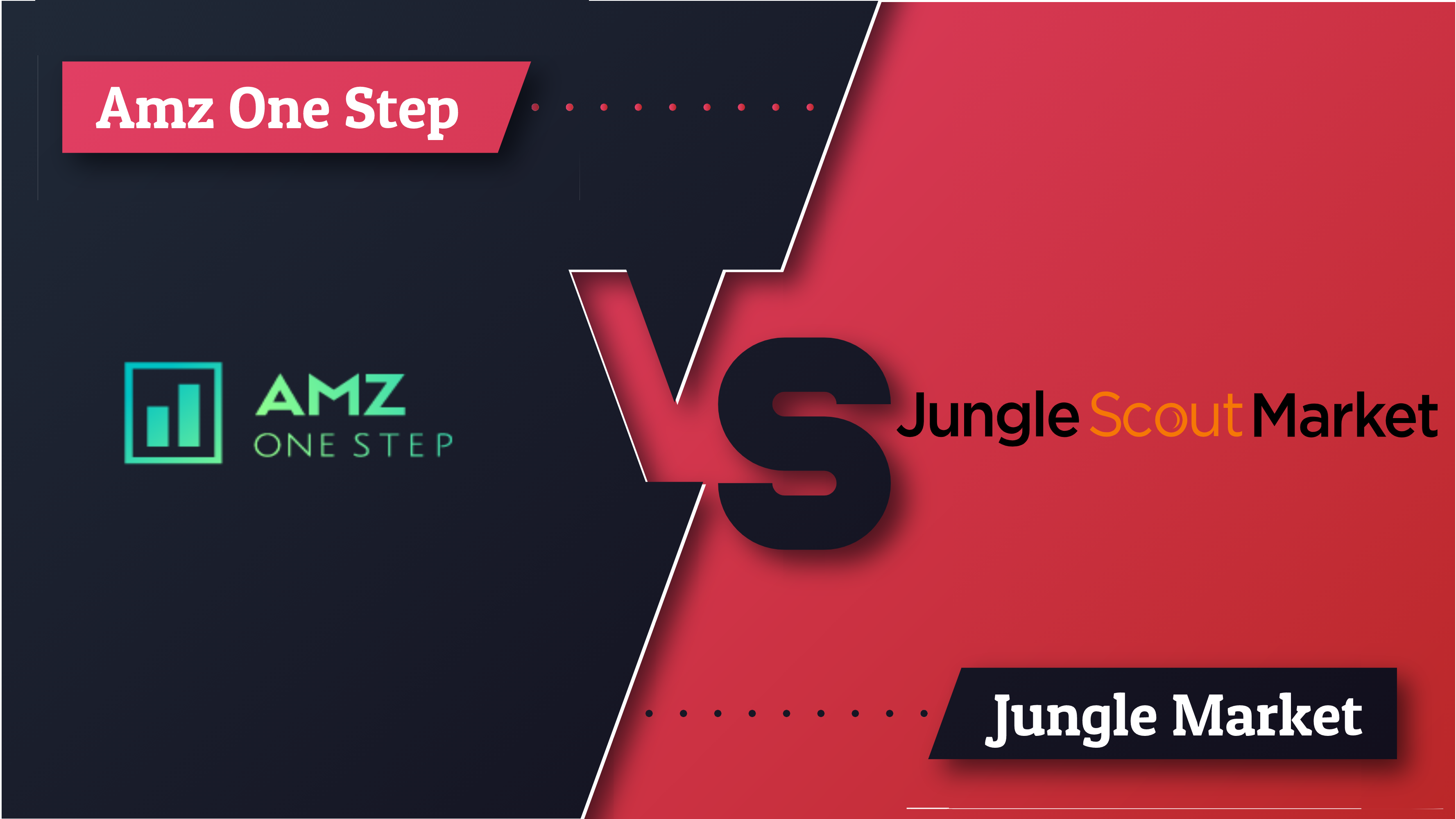

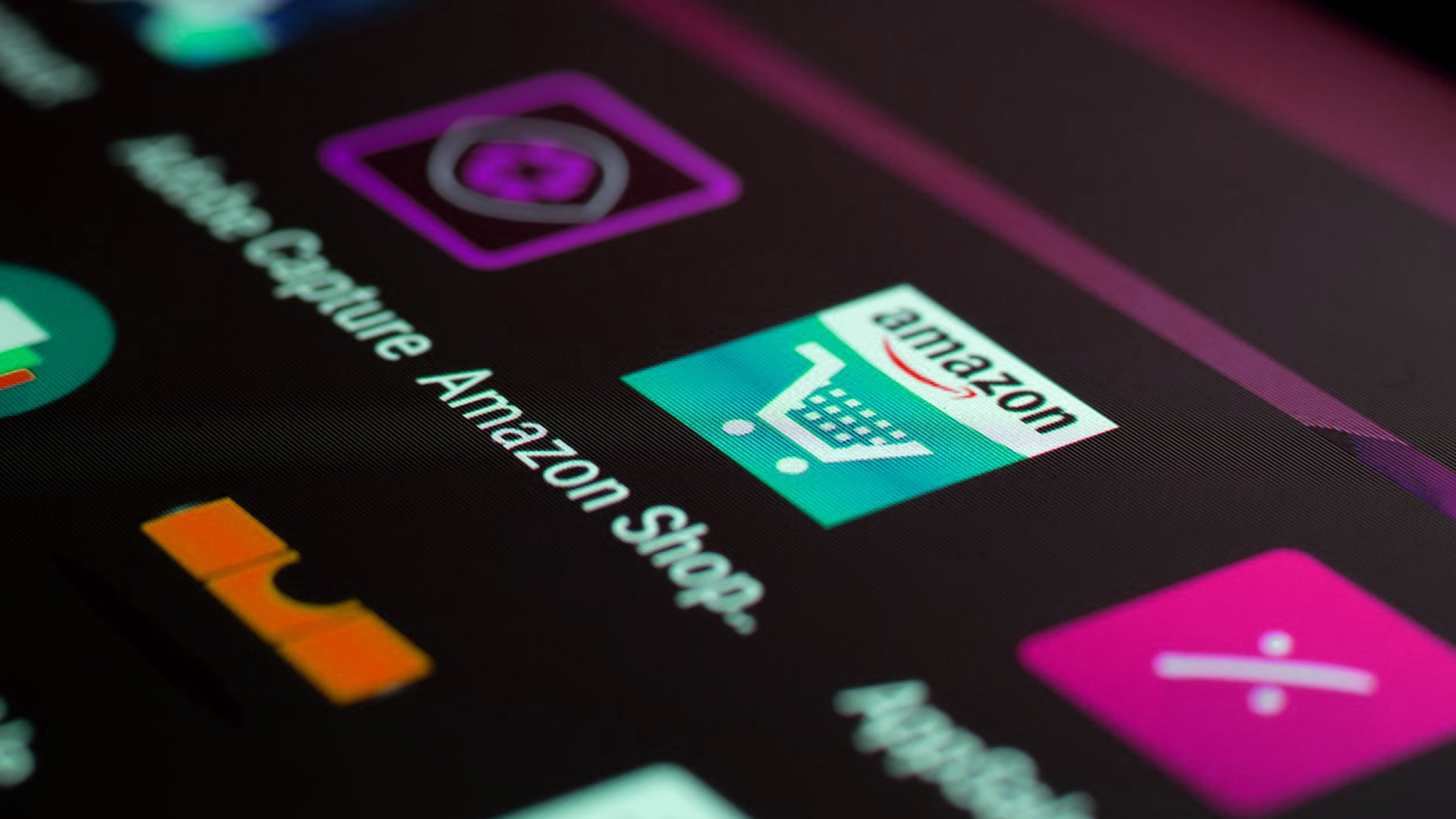

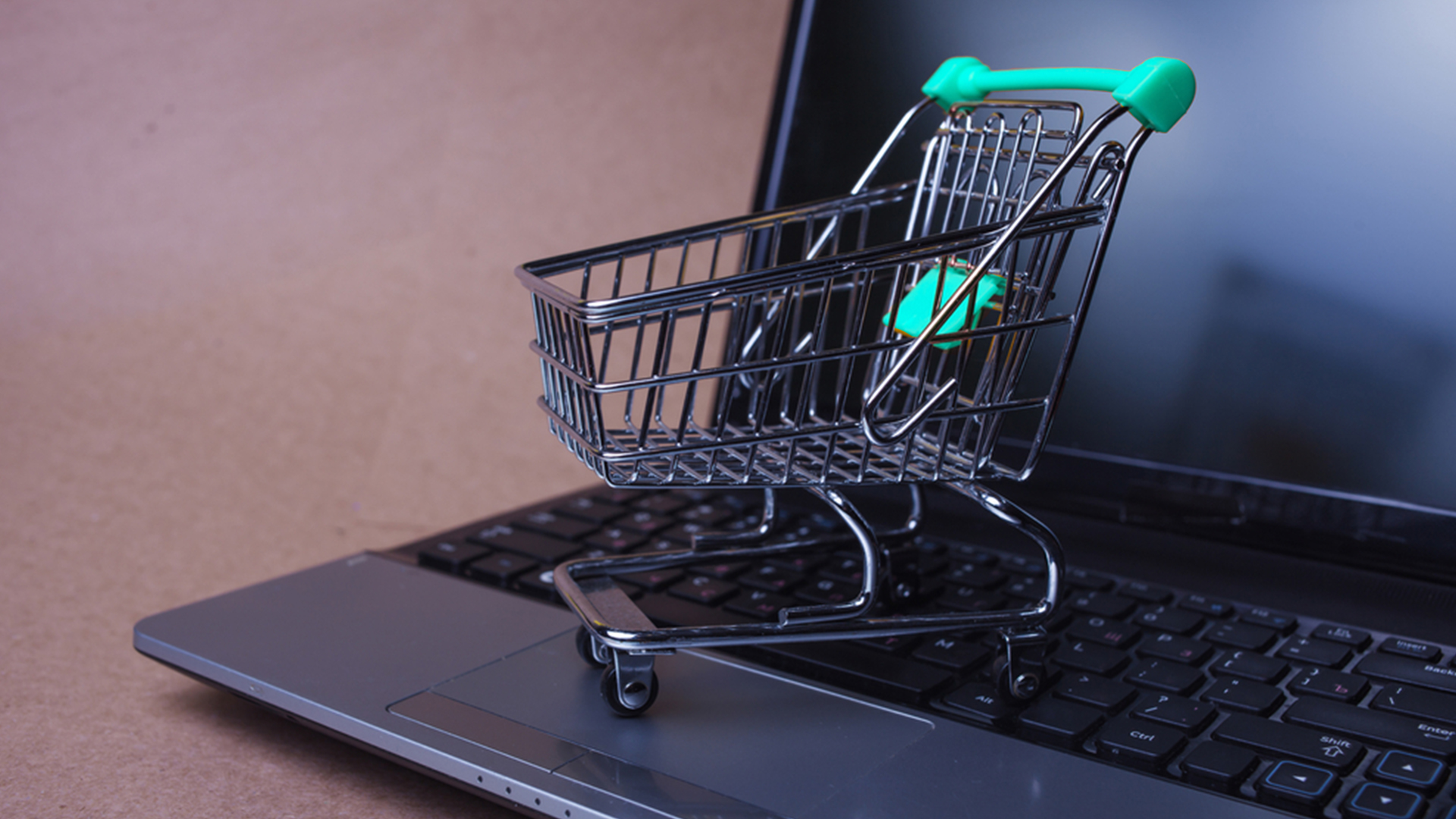





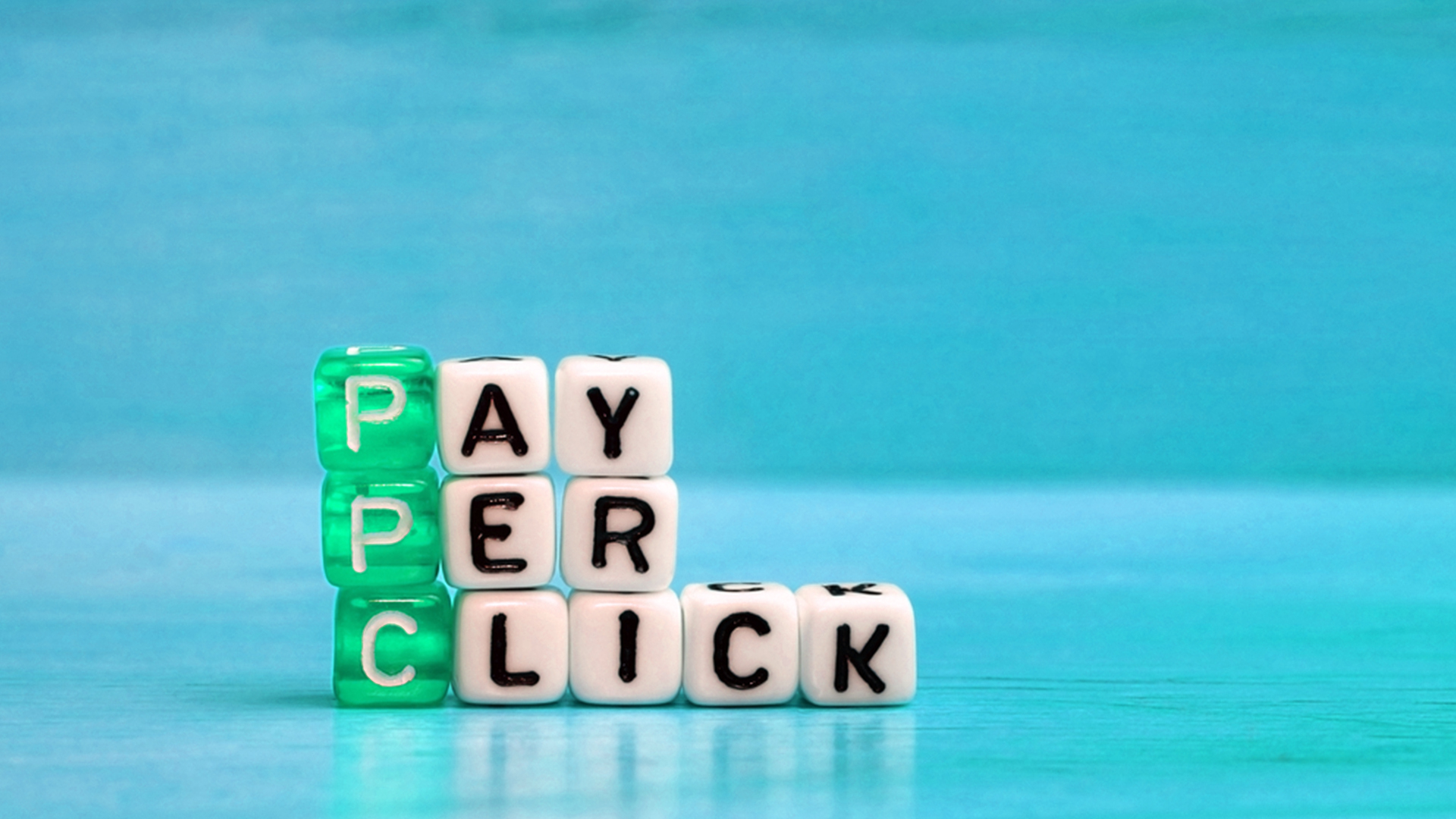


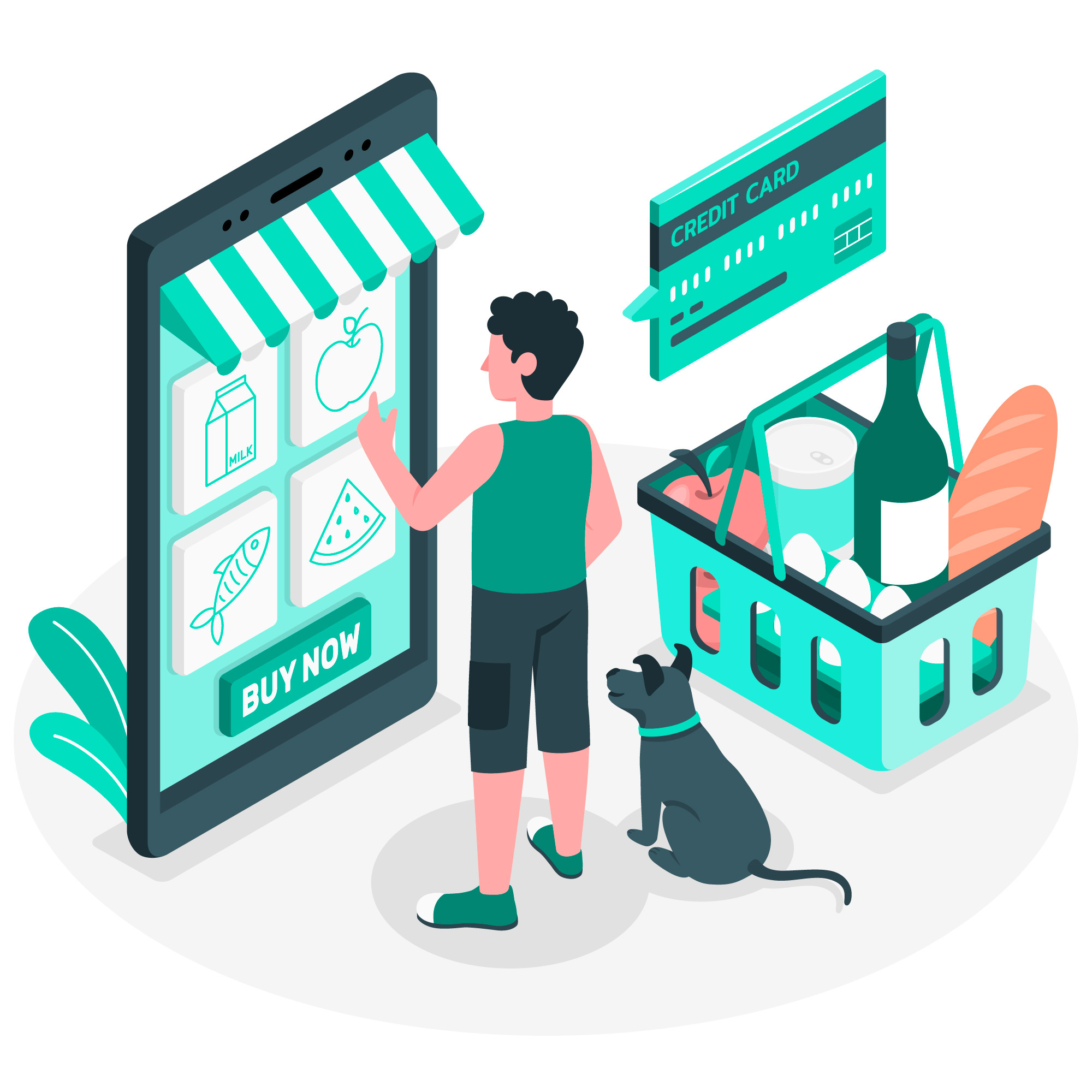
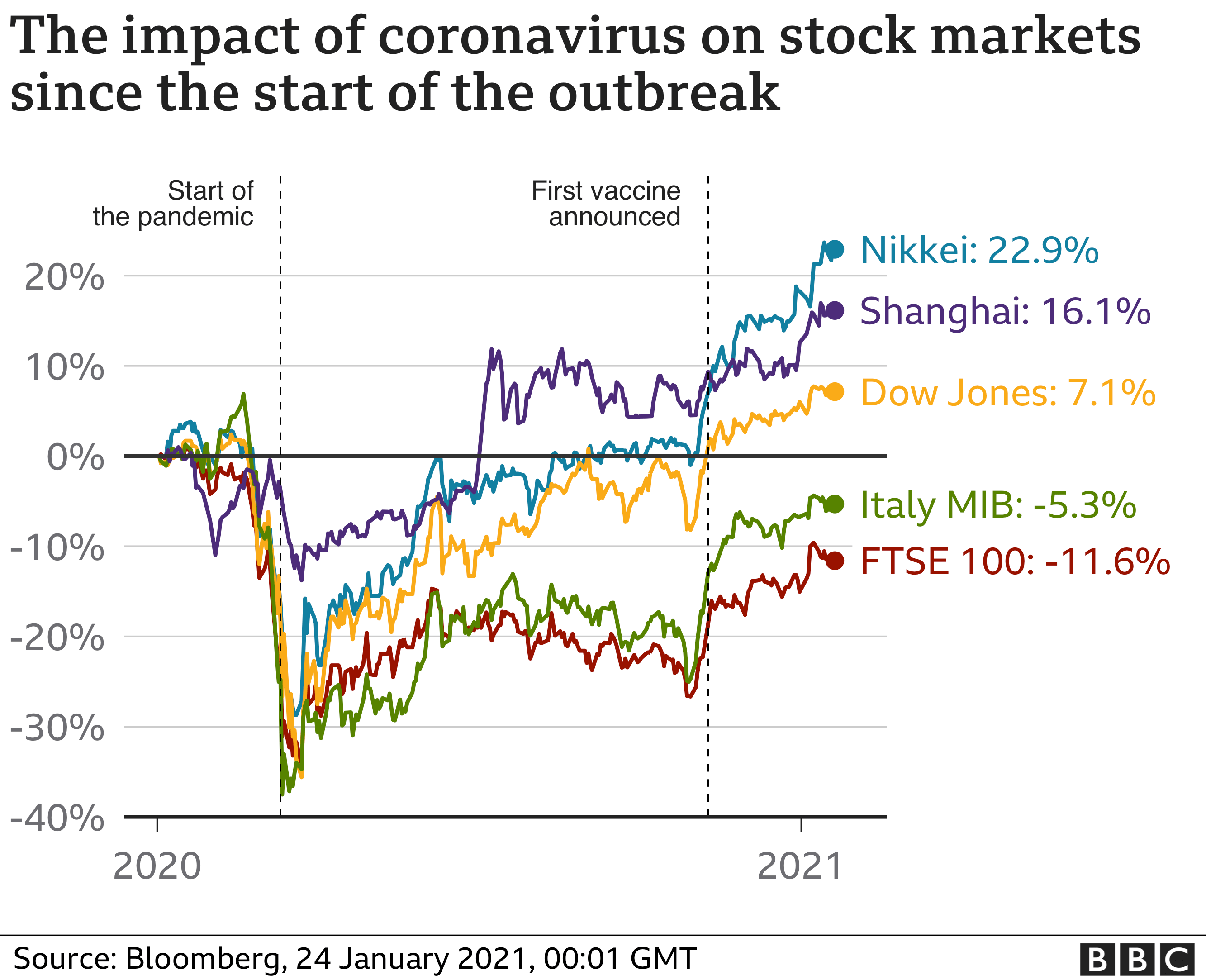

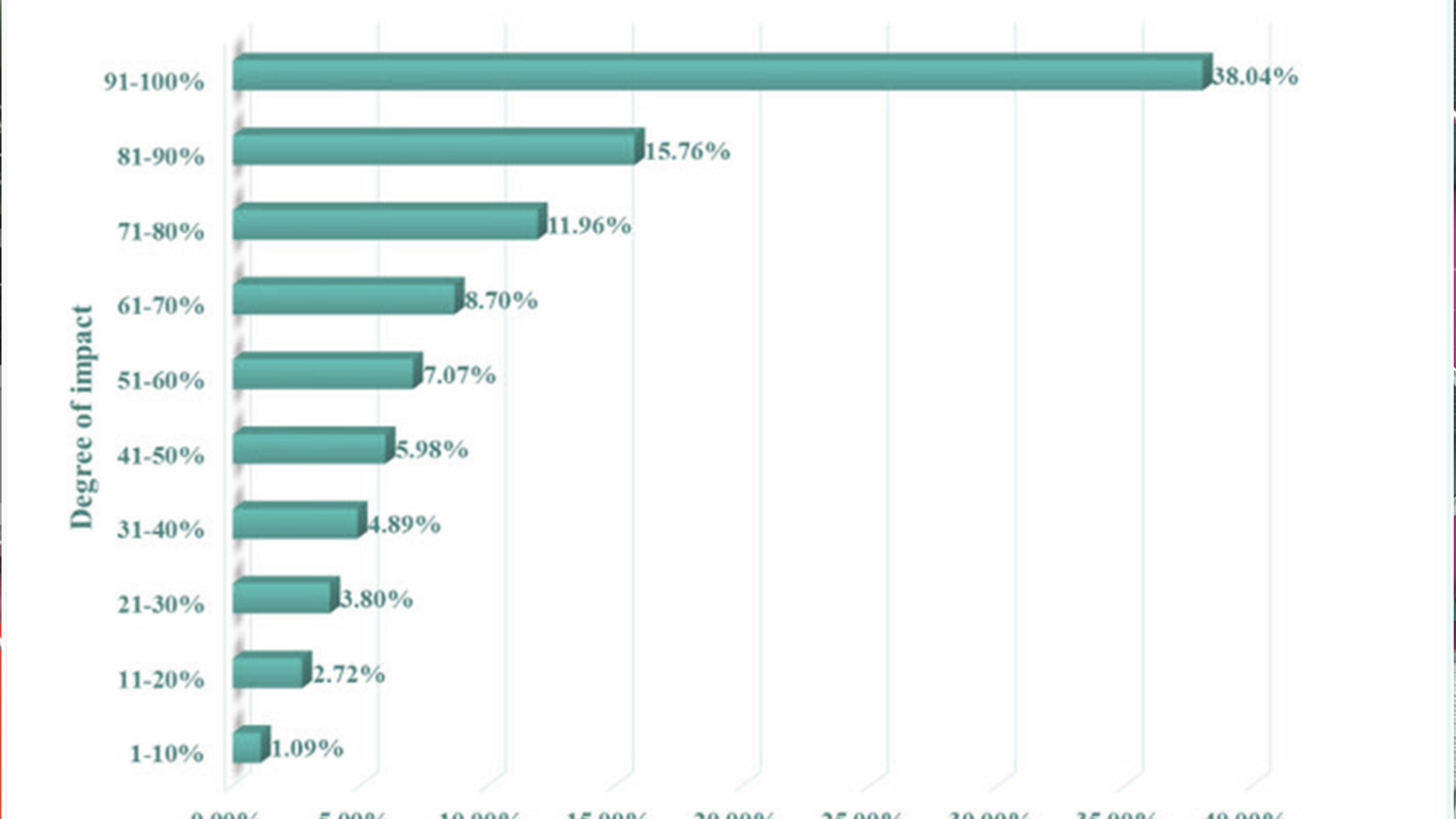









 To match a smooth supply to an increased demand for products, Amazon recently restricted its FBA sellers to 6 essential categories: Baby, Health & Household, Beauty & Personal Care (including personal care appliances), Grocery, Industrial & Scientific, and Pet Supplies.
To match a smooth supply to an increased demand for products, Amazon recently restricted its FBA sellers to 6 essential categories: Baby, Health & Household, Beauty & Personal Care (including personal care appliances), Grocery, Industrial & Scientific, and Pet Supplies.

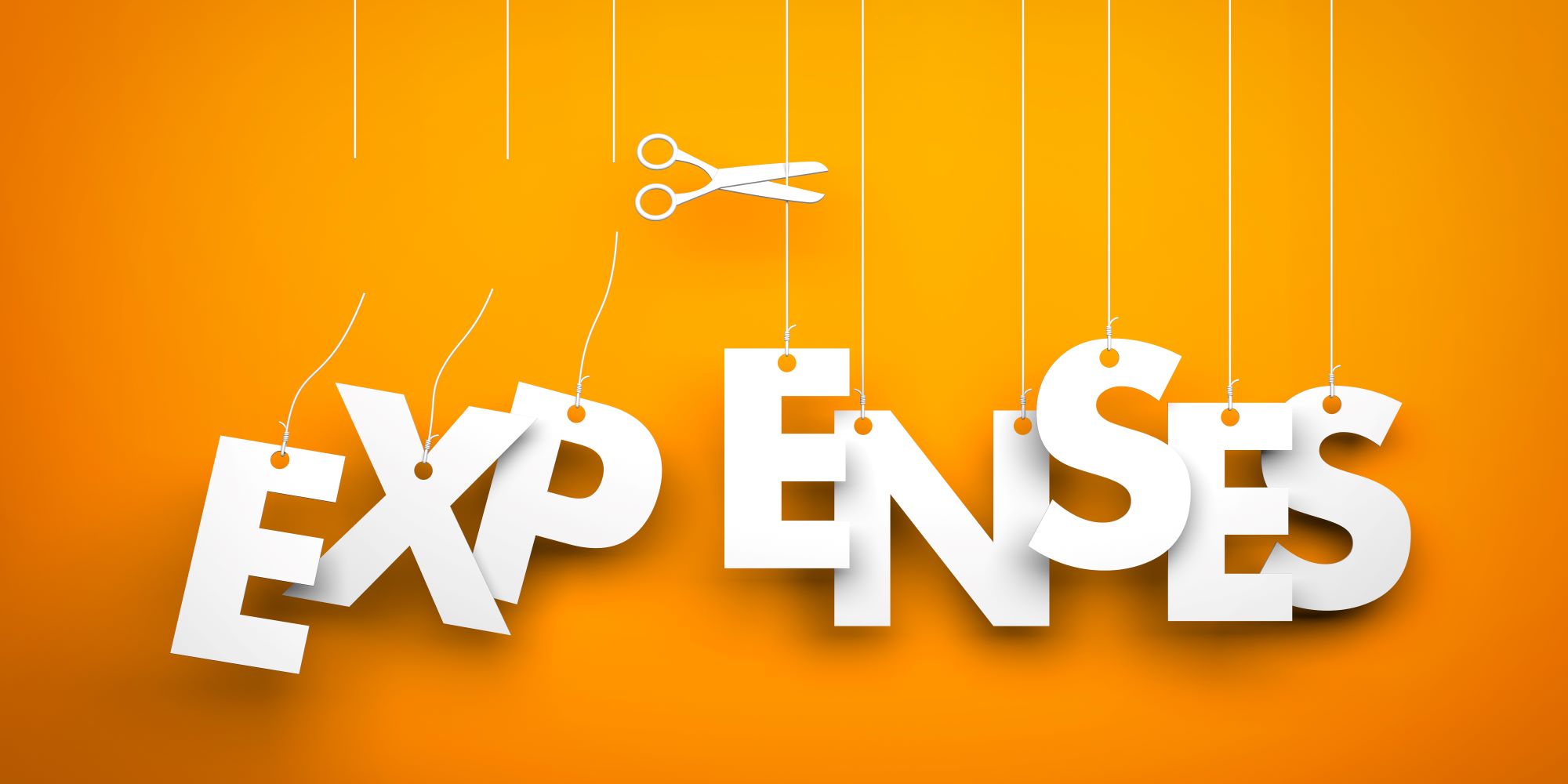
 These may be trying times and to make sure Amazon Sellers survive through this epidemic, here are a few suggestions sellers can apply to see their business through.
These may be trying times and to make sure Amazon Sellers survive through this epidemic, here are a few suggestions sellers can apply to see their business through. 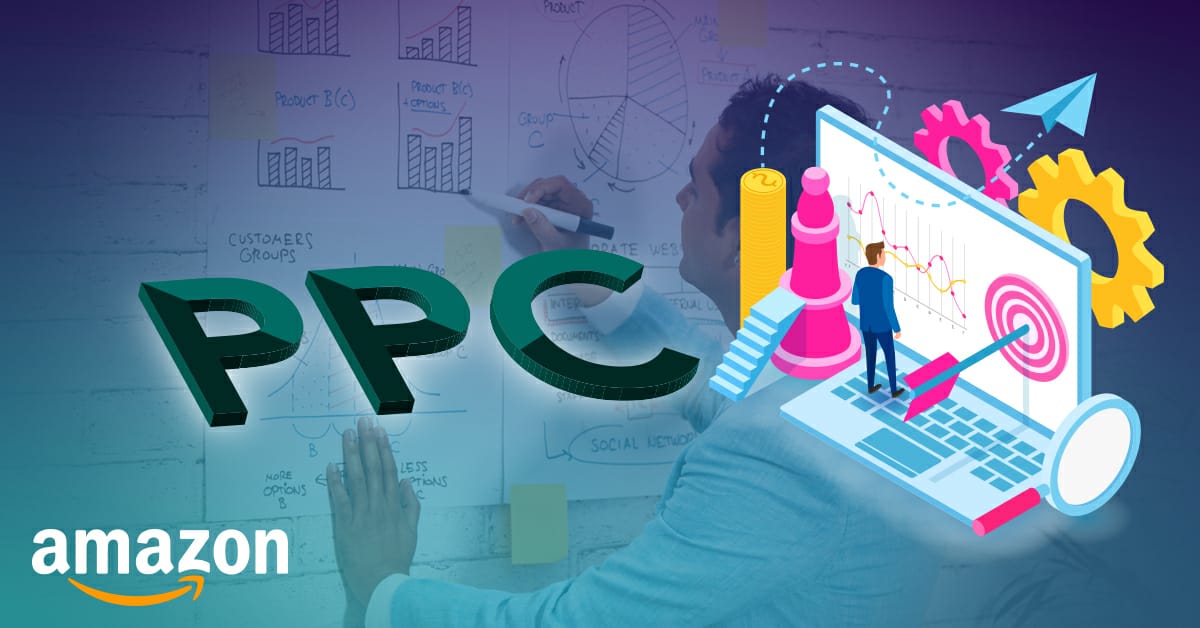

 Here are some important PPC terms you should familiarize yourself with.
Here are some important PPC terms you should familiarize yourself with.



 5. Select your preference of bidding strategy, we will go with the dynamic strategy.
5. Select your preference of bidding strategy, we will go with the dynamic strategy. 6.
6.










 It could also be that your listing is present in an irrelevant category or perhaps an incorrect subcategory. For example, you have listed your product ‘Green Coffee Mugs’ in the category of Kindle store or Electronics, where this product has absolutely no business being. A customer is not going to search or find this product in the relevant areas. Similarly, even with the right category ‘Home and Kitchen’, you can mistakenly end up with a wrong subcategory such as ‘bedding’ instead of ‘kitchen and dining’.
It could also be that your listing is present in an irrelevant category or perhaps an incorrect subcategory. For example, you have listed your product ‘Green Coffee Mugs’ in the category of Kindle store or Electronics, where this product has absolutely no business being. A customer is not going to search or find this product in the relevant areas. Similarly, even with the right category ‘Home and Kitchen’, you can mistakenly end up with a wrong subcategory such as ‘bedding’ instead of ‘kitchen and dining’.


